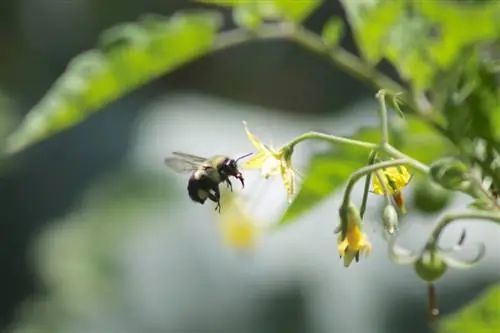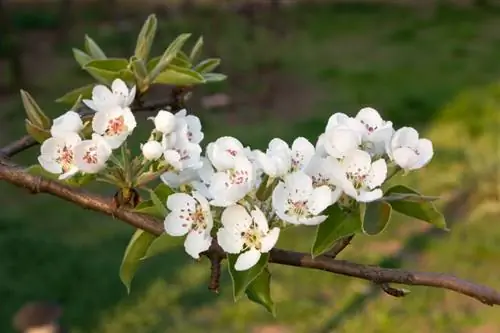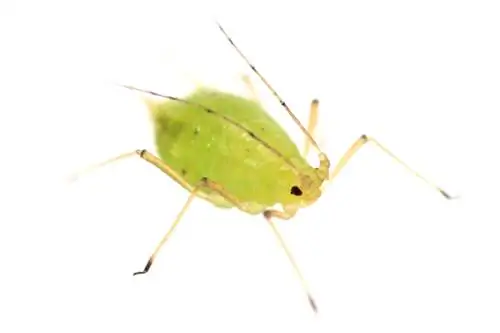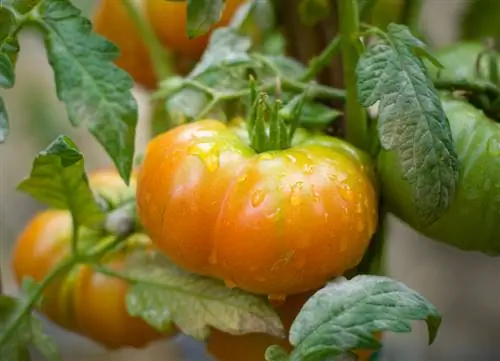- Author admin [email protected].
- Public 2023-12-16 16:46.
- Last modified 2025-01-23 11:19.
In the greenhouse and in the apartment, wind and busy insects have difficulty reaching tomato flowers. To ensure pollination is successful, knowledgeable hobby gardeners use various tricks. We reveal what they are and how they work.

How to pollinate tomatoes indoors?
To pollinate tomatoes indoors, you can shake the plants vigorously, brush the flowers with a soft brush, or use an electric toothbrush to create vibration. Repeat for several days in a row with a relative humidity of 50-80% and temperatures below 30°C.
This is how pollination of tomatoes works indoors
Since tomatoes are mostly self-pollinating, the wind and insects take on this important task outdoors. Bumblebees bite onto a flower and cause it to vibrate. Due to the vibration, pollen whizzes around and fertilizes open flowers. Mother Nature's hands are tied behind glass, so hobby gardeners carry out the pollination themselves. These methods have proven themselves:
- shake tomato plants vigorously repeatedly in the greenhouse and on the windowsill
- on individual tomatoes in the pot, paint over the flowers with a soft brush
- alternatively, vibrate the trellises with an electric toothbrush
- all methods must be carried out on several days in a row
Pollination works perfectly as long as the relative humidity is between 50 and 80 percent. In addition, the pollen clumps together and is no longer released. If the value falls below 50 percent, the ability of the pollen to germinate is reduced. In addition, the temperature must not exceed 30 degrees. Experienced hobby gardeners therefore invest in a hygrometer (€11.00 on Amazon) and a reliable thermometer.
Pure propagation thanks to targeted pollination
As long as you cultivate the plants of a single tomato variety, pollination in the greenhouse and on the windowsill will be of the same variety. However, if further breeding comes into play or if wind and insects reach the tomato cultivation outdoors, the purity of the variety is no longer guaranteed. If you aim to harvest tomato seeds you have grown yourself for propagation, you can prevent unwanted cross-pollination with a simple trick.
Before the flowers open, cover either the entire plant or individual flower spikes loosely with a close-meshed insect net. The petals must still be able to unfold underneath. Excess flowers are broken off. Suitable materials for an insect-proof cover are tulle or gauze. A single tomato flower can also be protected from cross-pollination using a tea filter.
The most skillful pollination will not be successful if the tomato plant does not develop any vital flowers. Careful care therefore forms the foundation for the entire process. The water and nutrient supply must be in balance, as must the site conditions.
Tips & Tricks
The vast majority of tomato varieties are self-pollinating - but not all. Wild tomatoes, for example, are not included. Instead of dealing with long-winded variety descriptions, just take a look at the flowers. If the stigma protrudes from the petals, it is one of the rare non-self-pollinating varieties. In this case, a second tomato plant is generally required for pollination.






